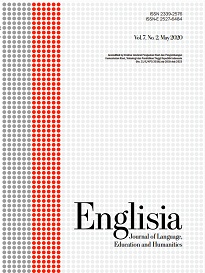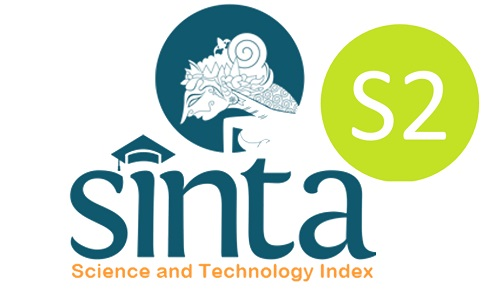Why vernacular language planning matters for preserving Acehnese languages?
DOI:
https://doi.org/10.22373/ej.v12i1.22739Keywords:
Language vitality, Language endangerment, Language revitalization, Vernacular language planning-policyAbstract
Language planning policy is essential for language preservation, yet research rarely addresses vernacular or local languages specifically. This study examines how vernacular language planning policies can contribute to the preservation and revitalization of local languages, focusing on the case of Aceh, a province in Indonesia with a rich variety of local languages requiring preservation efforts. The study’s primary goal is to identify an effective framework for vernacular language planning in Aceh that can serve as a practical reference for language policymakers, planners, and researchers in Indonesia and beyond. Utilizing a systematic review method, this research analyzes literature on language vitality, endangerment, revitalization, and planning policy. Key findings reveal a newly developed vernacular language planning framework tailored to the current vitality status of Acehnese languages, offering a suitable model for their preservation and revitalization. This framework has the potential to serve as a foundational tool for efforts to sustain and revive Acehnese and other vernacular languages more broadly.Downloads
References
Anderbeck, K. (2015). Portraits of language vitality in the languages of Indonesia. Asia Pacific Linguistic, April, 19–47.
Austin, P. K., & Sallabank, J. (2011). The Cambridge Handbook of Endangered Languages (1st ed.). Cambridge University Press. www.cambridge.org/9780521882156
Bello, M. (2013). Assessing Language Vitality and Language Endangerment of (Issue 10362664). University of Ghana.
Brenzinger, M., Yamamoto, A., Aikawa, N., Koundiouba, D., & Minasyan, A. (2003). Language Vitality and Endangerment.
Campbell, L., & Belew, A. (2018). CATALOGUING THE WORLD ’ S ENDANGERED (First Edit). Taylor & Francis Group.
Candrasari, R. (2017). BAHASA DEVAYAN DI PULAU SIMEULUE: KAJIAN VITALITAS BAHASA. Universitas Sumatera Utara Medan.
Chríost, D. M. G. (2003). Language, identity, and conflict: A comparative study of language in ethnic conflict in Europe and Eurasia. In Language, Identity and Conflict: A Comparative Study of Language in Ethnic Conflict in Europe and Eurasia (First Edit). Routledge Taylor & Francis Group.
Christmas, C. S. (2016). Family Language Policy: Maintaining an Endangered Language in the Home (First Edit). PALGRAVE MACMILLAN. https://doi.org/10.1057/9781137521811.0001
Cooper, R. L. (1989). Language Planning and Social Change. In Issues in Applied Linguistics (1st Editio). Cambridge University Press. https://doi.org/10.5070/l491005271
Crystal, D. (2000). Language death (1st Edition (ed.)). CAMBRIDGE UNIVERSITY PRESS.
Ding, P. S. (2016). Southern Min (Hokkien) as a Migrating Language: A Comparative Study of Language Shift and Maintenance across National Borders. In China Review International (Vol. 21, Issue 2). Springer. https://doi.org/10.1007/978-981-287-594-5
Dwiani Septiana, Andi Indah Yulianti, & Karyani, L. (2020). Language Shift and Vitality of Paku Language in East Barito. International Journal of Multicultural and Multireligious Understanding, 7(4), 403–410. https://ijmmu.com/index.php/ijmmu/article/view/1655/1279
Dwyer, A. M. (2011). Tools and techniques for endangered-language assessment and revitalization. Vitality and Viability of Minority Languages. http://www.trace.org/events/events_lecture_proceedings.html
Eberhard, David M., Gary F. Simons, and C. D. F. (eds. . (2023a). Ethnologue: Languages of the World. Twenty-sixth edition. SIL International. http://www.ethnologue.com
Eberhard, David M., Gary F. Simons, and C. D. F. (eds. . (2023b). Ethnologue: Languages of the World. In Twenty-sixth edition. http://www.ethnologue.com
Ewing, M. C. (2014). Language endangerment in Indonesia. International Journal of Education, 8(1), 49–80. https://doi.org/10.1075/cilt.240.05eng
Fink, A. (2014). Conducting Research Literature Reviews: From the Internet to Paper. In Evaluation Journal of Australasia (Fourth Edi, Vol. 7, Issue 1). SAGE Publications, Inc. https://doi.org/10.1177/1035719x0700700117
Fishman, J. (2006). Do not leave your language alone: The hidden status agendas within-corpus planning in language policy. In Do Not Leave Your Language Alone: The Hidden Status Agendas within Corpus Planning in Language Policy. Lawrence Erlbaum Associates. www.erlbaum.com
Fishman, J. A. (1991). Reversing Language Shift: Theoretical and Empirical Foundations of Assistance to Threatened Languages. Multilingual Matters.
Florey, M. (2010). Endangered Languages of Austronesia. In Endangered Languages of Austronesia. Oxford Research Encyclopedias, Linguistics. https://doi.org/10.1093/acprof:oso/9780199544547.001.0001
Grenoble, L. A., & Whaley, L. J. (2006). Saving Languages An Introduction to Language Revitalization (1st Editio). CAMBRIDGE UNIVERSITY PRESS. WWW.Cambridge.org/9780521816212
Haugen, E. (1966). Language Conflict and Language Planning The Case of Modern Norwegian. In The Handbook of Sociolinguistics. Harvard University Press. https://doi.org/10.1002/9781405166256.ch17
Hinton, L., & Hale, K. (2013). The Green Book of Language Revitalization in Practice. BRILL.
Hinton, L., Huss, L., & Roche, G. (2018a). The Routledge Handbook of Language Revitalization. In The Routledge Handbook of Language Revitalization (1st Editio). Routledge Taylor & Francis Group. https://doi.org/978-1-315-56127-1
Hinton, L., Huss, L., & Roche, G. (2018b). The Routledge Handbook of Language Revitalization (First Edit). Routledge Taylor & Francis Group. https://lccn.loc.gov/2017033800
Hogan‐Brun, G., Robinson, C., & Thonhauser, I. (2013). Acquisition Planning. In The Encyclopedia of Applied Linguistics (Fiert Edit). Blackwell Publishing. https://doi.org/10.1002/9781405198431.wbeal0007
Idaryani, & Fidyati. (2022). Language Vitality among Acehnese Parents and Its Implication to Language Maintenance : On Perspective of Expanded Graded Intergenerational Disruption Scale ( EGIDS ). Journal of English Language and Education, 7(1), 170–182. https://doi.org/https://doi.org/10.31004/jele.v7i1.264
Jahr, Ernst Hakon. (1993). Language Conflict and Language Planning. In W. Winter (Ed.), Trends in Linguistics. Mouton de Gruyter.
Jahr, Ernst Håkon. (1993). Language Conflict and Language Planning. In Trends in Linguistics Studies and Monographs 72 (Vol. 72, Issue 4). Mouton de Gruyter. https://doi.org/10.2307/415761
Ji, D. (2023). Chinese Heritage Language Maintenance and Identity Construction : Investigation of the Family Language Policy of Chinese Immigrant Families in New Zealand. The University of Auckland.
Kaplan, R. B., & Baldauf, R. B. (1997). Language Planning: From Practice to Theory. In J. Edward (Ed.), Victoria. Multilingual Matters LTD.
Krauss, M. (1992). The World’s Language in Crisis. Language, 68(1), 4–10.
Levine, A. D. (2008). Divided by A Common Language Factional Conflict in Late Northern Song China. University of Hawai’i Press.
Lewis, M. P., & Simons, G. F. (2010). Assessing endangerment: Expanding Fishman’s GIDS. Revue Roumaine de Linguistique, 55(2), 103–120.
Mohamed, N., & Hashim, N. H. (2012). Language vitality of the Sihan community in Sarawak, Malaysia. Kemanusiaan, 19(1), 59–86.
Mufwene, S. S. (2017). Language vitality: The weak theoretical underpinnings of what can be an exciting research area. Language, 93(4), e202–e223. https://doi.org/10.1353/lan.2017.0065
Ndimande-hlongwa, N. (2010). Corpus Planning, with Specific Reference to the Use of Standard isiZulu in Media. Alternation, 17(1), 207–224.
Obiero, O. J. (2010). From Assessing Language Endangerment or Vitality to Creating and Evaluating Language Revitalization Programmes. Nordic Journal of African Studies, 19(4), 201–226.
Omoniyi, T. (2010). The Sociology of Language and Religion Change, Conflict and Accommodation. In The Sociology of Language and Religion. Palgrave Macmillan. https://doi.org/10.1057/9780230304710
Onwuegbuzie, A., & Frels, R. (2016). Methodology of the Literature Review. In Seven Steps to a Comprehensive Literature Review (pp. 49–64).
Pine, A., & Turin, M. (2017). Language Revitalization. In Oxford Research Encyclopedia of Linguistics. Oxford University Press. https://doi.org/10.1093/acrefore/9780199384655.013.8
Ricento, T. (2006). An Introduction to Language Policy: Theory and Method. In J. Coates, J. Cheshire, & E. Reid (Eds.), International Multilingual Research Journal (First Edit, Vol. 3, Issue 1). Blackwell Publishing. https://doi.org/10.1080/19313150802668256
Schmid, C. L. (2001). The Politics of Language: Conflict, Identity, and Cultural Pluralism in Comparative Perspective. In The American Historical Review (Vol. 92, Issue 3). Oxford University Press.
Shimizu, K., & Bradley, W. S. (2014). Multiculturalism and Conflict Reconciliation in the Asia-Pacific Migration, Language, and Politics (First Edit). Palgrave Macmillan. https://doi.org/10.1007/978-1-137-40360-5
Siiner, M., Hult, F. M., & Kupisch, T. (2018). Language Policy and Language Acquisition Planning. Springer. https://doi.org/10.1007/978-3-319-75963-0
Spolsky, B. (2004). Language policy. In Language Policy (First Edit). CAMBRIDGE UNIVERSITY PRESS. http://www.cambridge.org
Spolsky, B. (2009). Language Management. CAMBRIDGE UNIVERSITY PRESS. www.cambridge.org/9780521516099
Spolsky, B. (2012). The Cambridge Handbook of Language Policy (First Edit). Cambridge University Press.
Syahputera, I., Zainun, & Kurniawati, W. (2019). Menakar Vitalitas Bahasa Gayo (M. Muis, Safrizal, & R. Fernando (eds.); I). Balai Bahasa Aceh. https://www.google.co.id/search?q=Bahasa+Terancam+Punah%3A+Fakta%2C+SebabMusabab%2C+Gejala%2C+dan+Strategi+Perawatannya+Gufran&rlz=1C1CHWL_enID780ID780&oq=Bahasa+Terancam+Punah%3A+Fakta%2C+Sebab-Musabab%2C+Gejala%2C+dan+Strategi+Perawatannya+Gufran&aqs=c
Tehan, T. M., & Markowski, L. (2017). An evaluation of so language vitality in Thailand. Journal of the Southeast Asian Linguistics Society, 10(1), 45–66.
UNESCO Ad Hoc Expert Group on Endangered Languages. (2003). Language Vitality & Endangerment (Issue March). https://doi.org/CLT/CEI/DCE/ELP/PI/2003/1
Yusuf, Y. Q., Aziz, Z. A., & Zulfikar, T. (2022). The Dynamics of Language Attitudes of Young Parents towards the Preservation of the Mother Tongue. Language, Discourse & Society, 10(1 (19)).
Downloads
Published
Issue
Section
License
Proposed Policy for Journals That Offer Open Access
Authors who publish with Englisia journal agree to the following terms:
- Authors retain copyright and grant the journal right of first publication with the work simultaneously licensed under a Creative Commons Attribution License that allows others to share the work with an acknowledgement of the work's authorship and initial publication in this journal.
- Authors are able to enter into separate, additional contractual arrangements for the non-exclusive distribution of the journal's published version of the work (e.g., post it to an institutional repository or publish it in a book), with an acknowledgement of its initial publication in this journal.
- Authors are permitted and encouraged to post their work online (e.g., in institutional repositories or on their website) prior to and during the submission process, as it can lead to productive exchanges, as well as earlier and greater citation of published work (See The Effect of Open Access).









